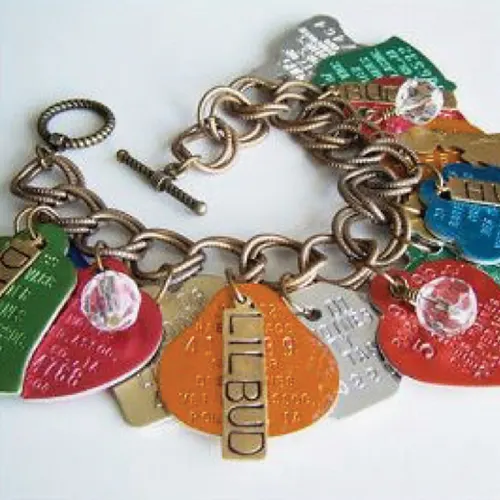Top 5 Ways to Honor Deceased Pets
Dani McVety, DVM, Lap of Love Veterinary Hospice, Tampa, Florida

Veterinary teams can help clients honor their deceased pets in many different ways (eg, clay or ink paw prints, fur clippings, memorial donations). Outside the practice walls, countless new ideas can help families memorialize their pets in unique ways—some that may surprise you!
1. Write a Gratitude List
Bucket lists for pets are a list of all the experiences an owner wants for his or her pet. After a pet has died, suggest the owner make a list of all the things she did with her pet—experiences they enjoyed together, things that made her smile, and memories she is thankful for. The list can be very simple; for example, the time her dog knocked over her cup of coffee, and when she was cleaning up the mess, she found a long-lost tennis ball under the sofa that she and her dog played with for the next hour.
2. Craft a Memory
Pets can be kept close at all times in many ways (see Memory Lane):
Pet ID tags made into a bracelet (see Figure 1), necklace, or tattoo
A paw print or nose print made into a pendant
A keepsake (eg, necklace, sweater, bracelet, belt) made from the pet’s fur
A DNA helix necklace
A lifelike, custom-stuffed animal (see Figure 2)
Ashes incorporated into an urn, jewelry, tattoo, or painting
Cloning him or her—yes, it can be done

Figure 1 Pet ID tags made into a bracelet. Photo courtesy of Dani McVety, DVM
3. Create a Memorial Table
Dedicating a space (eg, small table, bookshelf) to display a pet’s favorite toys, food bowls, photos, and mementos can help keep the pet’s memory alive, with or without the pet’s ashes. (See Figures 3 & 4.) For example, after a client’s dog, Jacob, was peacefully euthanized, the client ceremonially washed Jacob’s food bowls and placed them next to his clay paw print, puppy photo, and collar. A special journey urn that looks like a book, called The Life We Shared, was added later. (See Memory Lane.)
4. Pay It Forward
Not everyone who loses a pet is ready for another one right away, but paying it forward and helping other animals in need is another way to honor a deceased pet. Fostering another animal, donating to a cause in memory of a pet (eg, a college of veterinary medicine, animal shelter, humane society), or starting a cancer walk can help owners give tribute to their pet and stay involved in the pet-loving community.
5. Attend a Ceremony
Support groups in which owners can gather with others experiencing similar grief can be helpful. The local human hospice is perhaps the best place to begin; even if they do not hold their own pet-loss groups, they likely will know of such gatherings. Support groups for those who have lost loved ones may be just as beneficial because, after all, grief is grief, regardless of its cause.
Remember that support groups may help some people but may be too depressing for others. Events such as candle-lighting or floating lantern ceremonies honor pets in a special, meaningful way. If none exist in your area, it may be time to start your own ceremony.
Conclusion
Every owner, whether an adult or child, experiences loss and grieves differently, and care should be taken to let each person honor his or her lost pet in his or her own way. Veterinary professionals can give grieving families no greater gift than the ability to honor their beloved pets. Thankfully, the choices are many.
Pet Loss Resources for Children
When asked about the subject of children and death, a child psychologist once said, “If you want to raise an angry child, keep him [or] her ill-informed.” In other words, honesty is always the best policy. How a child responds will always be a reflection of his or her strength of bond with the pet, mental status, age, gender, and development stage.
In the author’s experience, children fall into 3 major age groups with different perspectives on pet loss. Here are resources for each age group:
Young children are typically most upset by the reaction of their parents or guardians. Stay away from euphemisms like He was sick or She is asleep, which may elicit fear when the words are used with their normal meaning. Direct, clear communication is best (eg, Mommy is sad because Stoli died). Resources for young children help them understand the meaning of death and that their pet will not be coming back.
I’ll Always Love You, by Hans Wilhelm (Crown Publishers, Inc; 1985), is a tender book that will touch any family member, especially children who have grown up with their pets and then have to say goodbye.
School-age children are curious, intelligent, and resilient. Losing a pet is typically their first experience with death and can be very difficult, so it is a good time to model dealing with intense feelings appropriately. Children in this age group should not be shielded from the experience. Resources help them understand and manage grief.
When a Pet Dies, by Fred Rogers (Family Communications, Inc; 1988), is an excellent book that is both direct and gentle and encourages children to share their feelings of loss.
The Tenth Good Thing About Barney, by Judith Viorst (Aladdin Paperbacks; 1971), will start family conversations about the good times with their pet. When a little boy’s cat dies, the family plans a funeral and asks the boy to recall 10 good things about his cat, which lifts his spirits.
Teenagers and young adults can be the most challenging to work with because they frequently have a hard time accepting a decision to euthanize a pet. Discuss the situation, ask open-ended questions, and seek feedback to ensure they understand why and how a medical decision is being made. Resources for this age group help explain that death can be a peaceful, loving, and calm experience.
Lifetimes: The Beautiful Way to Explain Death to Children, by Bryan Mellonie and Robert Ingpen (Bantam Books; 1983), may seem slightly juvenile, but the book covers dying in different living things (ie, plants, animals, people) and explains how birth and death are both a part of life.
On Death and Dying: What the Dying Have to Teach Doctors, Nurses, Clergy, and Their Own Families, by Elisabeth Kübler-Ross (MacMillan Publishing; 1977), is one of the best resources available for older teenagers and adults who need a more cerebral approach to understanding the loss of a family member.
This article originally appeared in the November/December 2016 issue of Veterinary Team Brief.